How e-Commerce Applications Help Your Business Grow?
29 Nov 19 

E-commerce is the most preferred way of trading goods and services. Today more and more people prefer to buy articles through the internet and assisted technologies. The key factors driving this e-commerce revolution is social media, advances in e-commerce app development, rising preference for mobile commerce, and other digital modes. The role of e-commerce applications is the most significant here.
But before we look into the way of e-commerce applications help stimulate your business. Let us steer through the basics first.
What are e-Commerce Applications?
E-commerce applications is a bit misleading terminology, as it leads to two possible perceptions: one, where it refers to the use of e-commerce as a medium of marketing; retail and wholesale; auctioning; e-banking; booking and so on.
The second idea one gets is that of a software application like Amazon, eBay, Groupon, etc. It may be a web application or mobile application (now popularly known as m-commerce applications). Mobile e-commerce applications are nothing but an extension of e-commerce. Mobile app ideas are the driving force behind every successful business app, be it an Uber-like taxi app or a DoorDash like a food delivery app.
The picture below describes the two meanings accurately. The orange color implicates the use of e commerce applications with the first intention, and the green shows the use for the second.
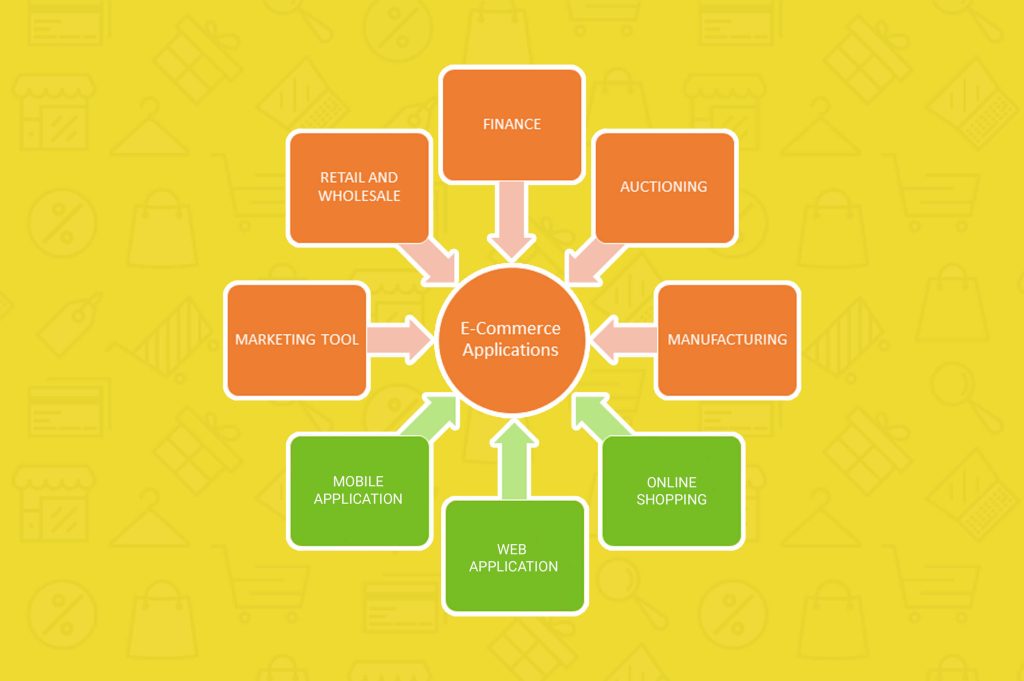
Most Common E-commerce Applications
In the previous section, we briefly touched upon the two perceptions of e-commerce applications. Now, let us delve into them in more detail.
1. Retail and Wholesale
E-retailing or online retailing refers to the transaction of goods and services through online stores from businesses to consumers. It is achieved through means such as virtual shopping carts and e-catalogs. The applications of e-commerce in this sector is numerous.
2. Finance
Finance and e-commerce is more connected today than ever. Banks and stock markets use e-commerce significantly in their operation. Online banking provides provisions such as balance check, bill payment, money transfer, etc. Online stock trading enables people to carry out trading electronically by giving information about stocks such as performance reports, analysis, charts, etc. through websites.
3. Manufacturing
In manufacturing, e-commerce forms a medium for companies to execute the electronic exchange. Combined buying and selling, sharing market status, inventory check information, etc. enables groups of companies to fluidly carry out their operations.
4. Auctioning
Applying e-commerce to auctions takes it to a more significant level where people can participate without any geographical boundaries. That leads to more participation, more negotiation, and helps to make auctions successful.
5. Marketing
Marketing activities such as pricing, product features, and building customer relationships can be strengthened using e-commerce to provide users an enhanced and customized shopping experience. Digital marketing strategies have become a significant way to promote businesses.
6. Online Shopping
The shopping preferences of people have undergone a massive change in the last few years. “Go online” has become a mantra for all businesses to succeed. Online shopping is comfortable, convenient, and at most times, cost effective. The prosperity of online shopping apps such as Flipkart, Amazon are proof of this.
7. Mobile and Web Applications
Popularly called mobile commerce or m-commerce applications, this is a subset of retail e-commerce. Mobile or web application development has become a staple for brands to showcase their business capabilities. The consumer carries out purchases through mobile or web applications that are optimized for the retailer. These applications also ensure payment security through safe e-payment methods.
8. Online Booking
Travel and tourism is a thriving industry today, and online booking is an ecommerce application that is growing as a result of it. Online booking helps people book travel essential services like train/flight tickets, hotel rooms, tourism packages, transportation services, etc. It makes travel very convenient and easy for people as everything can be set from the tip of the fingers.
9. Online Publishing
Digital magazines and e-books are slowly replacing traditional printed books. It has several advantages such as portability, lightweight, accessible from everywhere, etc. They are also environment friendly as they help in reducing paper and saving trees. Due to these reasons, online publishing or e-publishing has been seeing a rise in popularity.
10. E-banking
E-banking or internet banking is an e-commerce application that has simplified time-consuming and complex banking processes for people. It enables bank users to perform transactions easily online without having to wait in long queues in banks. Every major bank has its own online application today to provide virtual banking services to its customers.
Types of E-commerce applications
We can classify e-commerce applications in many ways, but here we present a classification that is in line with the mobile app development of e-commerce.
1. B2B (Business- to – Business)
A B2B e commerce application is concerned with providing goods and services between two businesses. Hence, the products they are selling will be such that it becomes a raw material for another industry. Mobile apps that sell spare automobile parts, machine parts, etc. come into this category of apps. Boodmo is an example of such an app.
2. B2C (Business- to – Consumer)
It represents the majority of the mobile apps that we use today. It connects a business offering a product or service to an individual customer. The dealing here is direct with the consumer. PIU, a taxi booking solution, is an example of such an app.
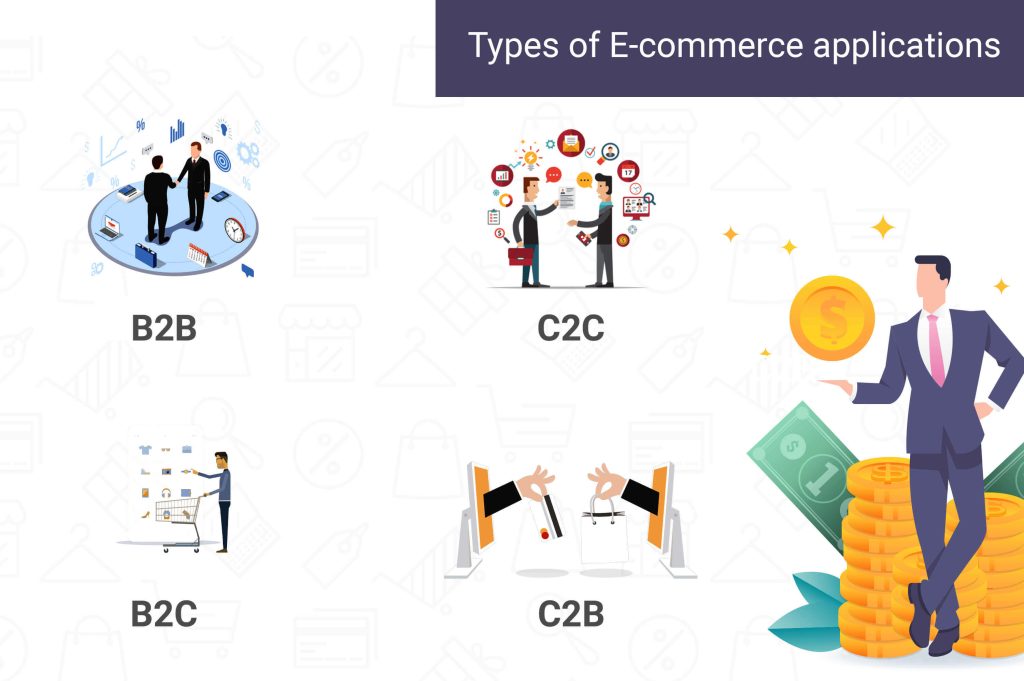
3. C2C (Consumer -To- Consumer)
Here the exchange happens between two or more consumers. The best example of such dealings are the apps that facilitate the auctioning of products.
4. C2B (Consumer -to -Business)
Though this kind of apps are very few, yet agencies like Clutch and GitHub are building foundations for such possibilities. Designers, content writers, or experts in various fields can offer their masterpieces to businesses through such C2B e-commerce applications. If you have such amazing mobile app ideas, don’t just wait, start working upon them.
The Anatomy of eCommerce Applications
How do these e-commerce applications work? What are the different elements that constitute an e-commerce application? Let us take a look at their anatomy and discuss them in some detail.
1. Multimedia content for e-commerce applications
Multimedia content is the life of e-commerce applications that makes them unique and innovative. It basically involves the use of content in several formats, such as images, animations, audio, video, text, etc. The idea behind the use of multimedia content is to increase the interactivity of users by making digital content imitate everyday human communication.
2. Multimedia storage servers and e-commerce applications
Powerful servers are the lifeline of e-commerce applications as they aid the storage and distribution of digital content to people. These servers must be capable of storing large and diverse content, must support large scale distribution, and provide complete security and reliability.
- Client-server architecture: The architecture followed by all e-commerce applications, the client-server model implements a standard called message passing to execute the interaction between client and server. This interaction takes the form of a “request-reply” sequence. While the client device handles the user interface, the server handles the tasks, storage, security, and scalability.
- Internal processors of multimedia servers: Multimedia servers take raw data as input and give legible information as output. The internal processes that deal with the storage and manipulation of data are crucial for e-commerce applications. It requires cutting edge symmetric multiprocessors and enormous parallel systems to handle thousands of users and manage their executions simultaneously.
- Video servers and e-commerce: On-demand videos are an integral feature of e-commerce applications. These will include telecommunicating, video-conferencing, corporate multimedia servers, shopping kiosks, etc. These video servers must be capable of delivering information to thousands of users simultaneously.
3. Information transport and ecommerce applications
In e-commerce applications, telecommunication, cables, and wireless services are the primary transportation providers. Telephone lines, local and long-distance, are managed by telecommunication companies, while cellular, paging, and radio are managed by wireless communications. Cable operators manage coaxial, optical fiber, satellite lines, and computer-based services to handle the internet and related services.
4. Consumer access devices
The way users access e-commerce applications is dependent on the devices that they use. Access devices can be videophones, personal computers, consumer electronics like television and game boxes, digital assistants like voice-driven, pen-based computing, etc.
Why you need eCommerce applications for your business?
According to statista.com, the number of consumers who will be making digital means to shop for their essentials will be exceeding 65% by 2021. This alone is a good reason enough for you to switch our business to e-commerce applications. Another reason is that by the end of this year, almost 75% of the US population is bound to be smartphone users.
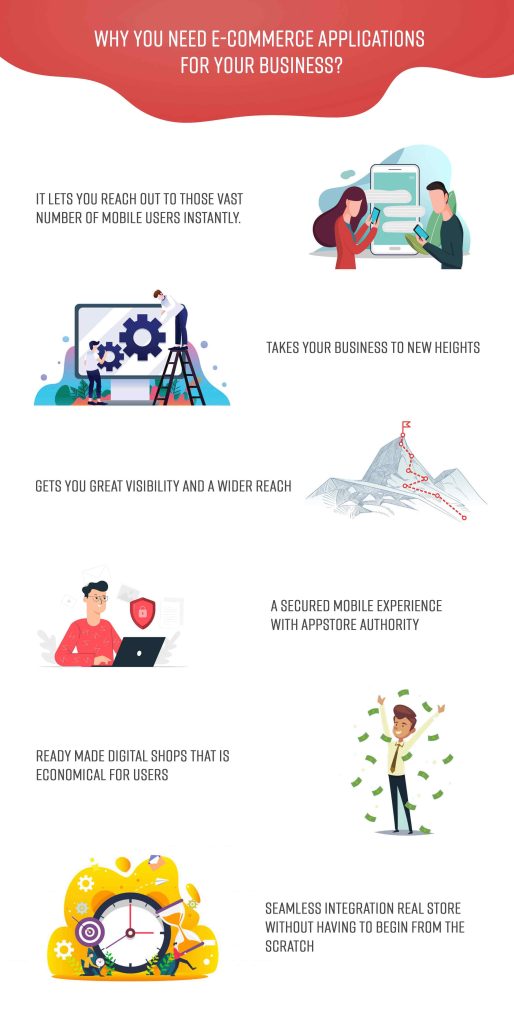
Well, if you are still not convinced. Then we have a bagful of reasons to impress you on the need to make a move towards a robust e-commerce mobile app.
A well-fitting e-commerce app will give you a cutting-edge over your competitors. It does so through by providing :
1. Mobility
You cannot take your store from one town to another, but you can definitely refer a mobile app from one smartphone user to another. And that is possible with a simple share button from the USA to Japan, from Finland to Papua New Guinea within seconds. This is the power of mobile apps. It adds infinite mobility to your store small or big, size just doesn’t matter at all.
2. One-to-One Marketing
Before the progress in the e-commerce app development, it was impossible to think that you can market to every person in a town personally. But today it is possible. The other side of this is that you can target the customer one to one. New analytic tools like Big Data and others in the stream help you reward, persuade, and win customers who are most loyal to you and impress new ones as well.
3. Faster Payment
E-commerce apps come with integrated features like in-app payments. The digital banking boom and m-banking in particular is the new style of paying the debts. An e commerce app will help your customers get easy refunds and pay you faster. A surprise cashback offer kicks off best when it is an app that gives them the good news!!!
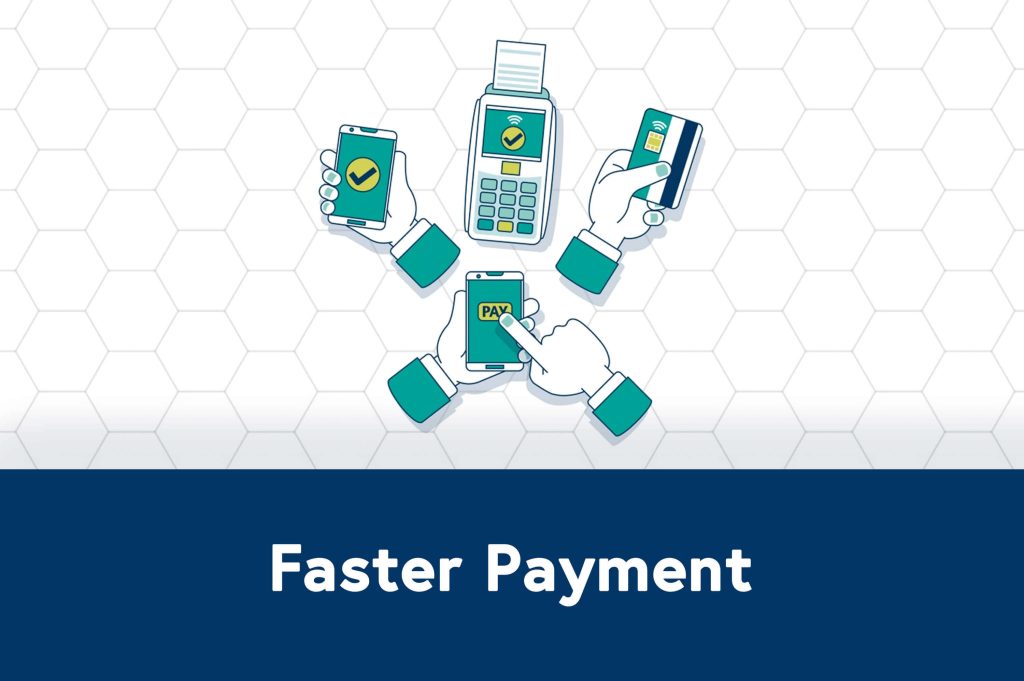
4. Fit to Need
How often can you arrange the things in your shopping complex? Maybe in a year, at max quarterly. Imagine you can do it every week or if your resources permit even daily. A new look awaits your customers every single day. Well, this happens only in a mobile app. The feedback you receive can be turned into actions to show how responsive to customers you are. What can be a better way to build brand loyalty?
Let’s hope you are now convinced more than ever to take your business online with a trusted partner like Mindster.
Now let’s move to the part you are waiting for, and that is:
How eCommerce apps help your business grow?
It is quite simple since we have examined the fragments surrounding an ecommerce application closely. All you need to do is put it together, add one to one, and then you have the answer. Allow us to assist in making things more transparent.
The Internet must have simplified many things, but the basic tenets of prudent marketing never change — the basic principles of marketing the 4 Ps viz. Product, Price, Promotion, and Place remains the same. The 4Ps are called the marketing mix, and more your business adheres to it more successful it’s going to be.
#1. Inform to Impress
What strikes you the most when you use an e commerce application?
The way you see the products. Right?
The way it is displayed the information about the product and the feeling that you are reading valuable information.
Marketing Mix Angle: Takes care of the first P i.e., the Product. Informs customers about the features and specialties of your products.
Takes care of the first P i.e., the Product. Informs customers about the features and speciallties of your products.
#2. Cut Your Cost
The next spot where an e-commerce app can strengthen your business is by cutting your budget. As we saw in the many examples above, a mobile app once created lets; you modify your e-commerce store without much ado. The cost of changing a brick and mortar physical store is quite lofty when compared to a simple design switch. Further, it lets you save on the staff, rent, advertising, etc.
Marketing Mix Angle: It lets you cut on the external costs to offer your product at a more competitive price to your customers.
#3. Customer Satisfaction
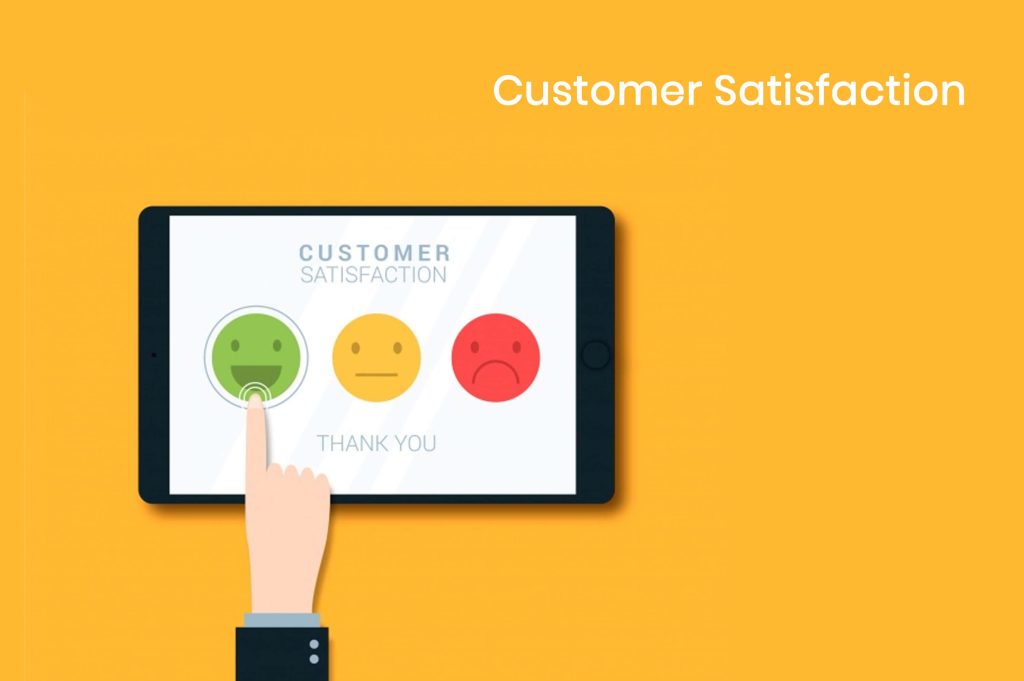
Nothing works for brand building than wooing your target customers. And who doesn’t like yummy offers?
An e-commerce app lets you provide many value-added services to consumers. For example, Google Pay conducts gaming to engage and promote its payment solution through cleverly designed tasks. Many e-commerce apps like Amazon, Flipkart, eBay, etc. use Christmas, Halloween, and other special days to offer freebies and offers.
Marketing Mix Angle : It takes care of the third P i.e., Promotion of the marketing mix. The marketing aspects can be most effectively channeled to the targeted customers through mobile apps.
#4. People are Mobile
Studies have established this again and again. People are now mobile and once you invent an easy way the mind takes you there unconsciously.
Just consider this example, you are in a hurry, and you want to add proteins to your breakfast; unfortunately, you don’t have any eggs on your shelf. The nearest store is about a mile away, and the grocery app gets you eggs in a few clicks. Once you get the eggs from your favorite grocery delivery app, next time you run out of a grocery, you are getting your smartphone quite naturally. That’s the thing with the mind. Easy is right, and right is easy. No wonder every grocery service today needs a mobile app in the USA.
The story of InstaShop is inspiring for hundreds of startups across the world for InstaShop leveraged this mobile tendency of the Millenials in UAE.
Marketing Mix Angle: The fourth P, Place, is taken care of here. Instead of locating production units here and there, you are taking it to a customer’s home, to the very place he is right now.
Some other mobile app development trends like virtual reality apps, scan on-the-go apps, etc. are defining e-commerce applications. Check out the AR(Augmented Reality) integrated L’OReal Paris app. One is sure to download this app just for the fun of it.
So far, everything is good with mobile e-commerce applications. But to hire a mobile app developer, you need to know more about the latest trends in the mobile app industry.
Bonus Points:
Even Though it is beyond the scope of this article, we like giving our readers a few extra goodies. So check out our infographics below on the essential features of an e-commerce app.
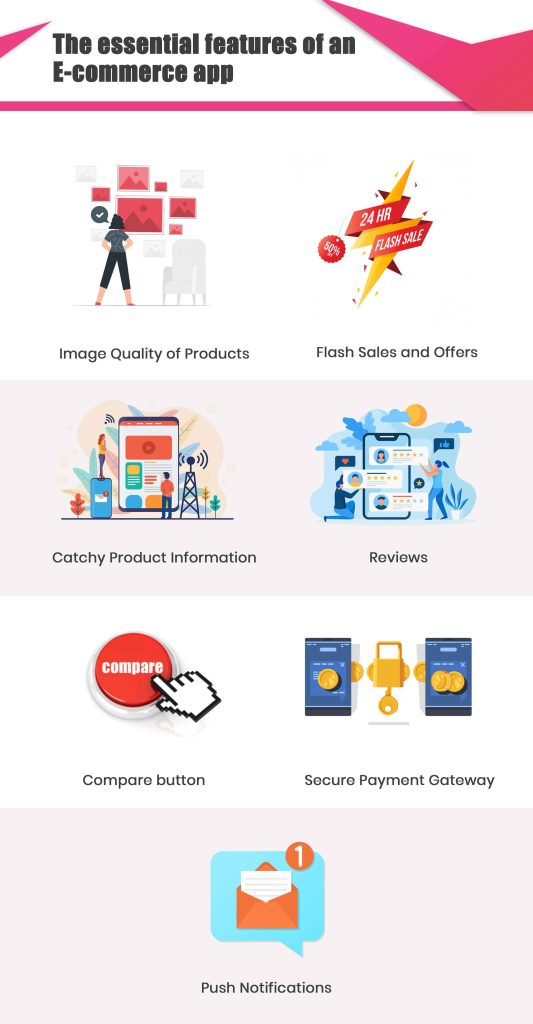
Watch out for the above features and select a mobile app development company that delivers on these must-have facilities. We wish you all the success in your endeavor.
We have developed some stunning e-commerce apps that have won many appreciations from our customers. Check out our case studies, to trace the legend of incredible Mindster apps like:
Mahavir Grocery App
A top-grossing app that took Mahavir Grocery Store from the streets to digital fame.
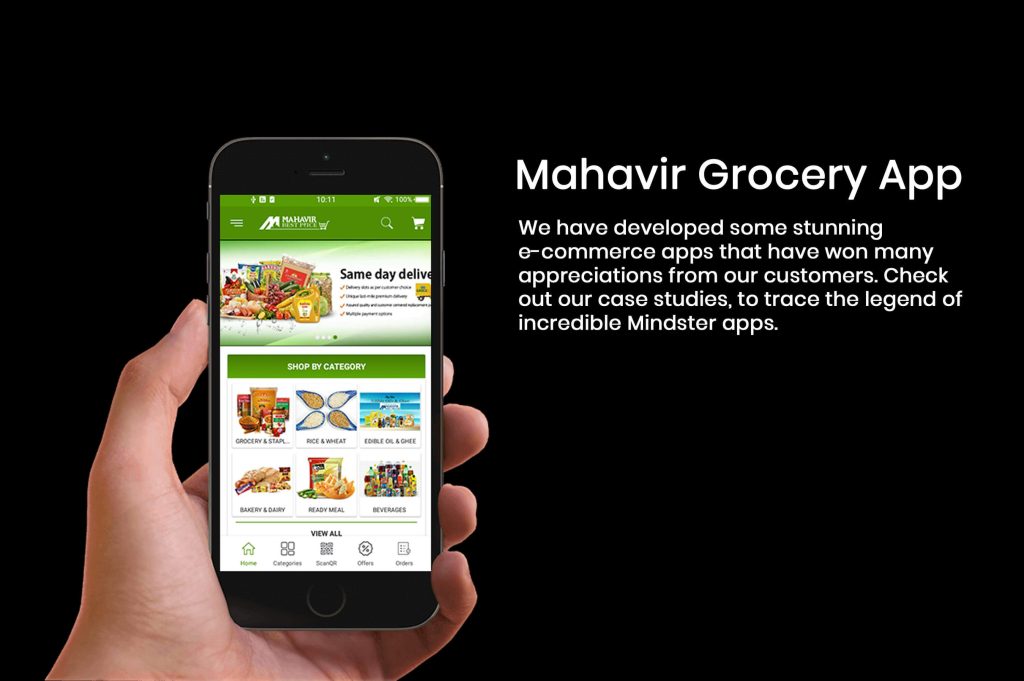
If you are planning to make stunning apps that shine out in the market and improves your business, then, let’s meet. Give a new turn to your sales with our e-commerce mobile app development team.
- Agentic AI1
- Android Development3
- Artificial Intelligence34
- Classified App3
- Custom App Development5
- Digital Transformation12
- Doctor Appointment Booking App14
- Dropshipping1
- Ecommerce Apps40
- Education Apps2
- Fintech-Apps37
- Fitness App4
- Flutter4
- Flutter Apps20
- Food Delivery App5
- Grocery App Development1
- Grocery Apps3
- Health Care10
- IoT2
- Loyalty Programs9
- Matrimony Apps1
- Microsoft1
- Mobile App Maintenance2
- Mobile Apps129
- Product Engineering6
- Progressive Web Apps1
- React Native Apps2
- Saas Application2
- Shopify9
- Software Development3
- Taxi Booking Apps7
- Truck Booking App5
- UI UX Design8
- Uncategorized6
- Web App Development1









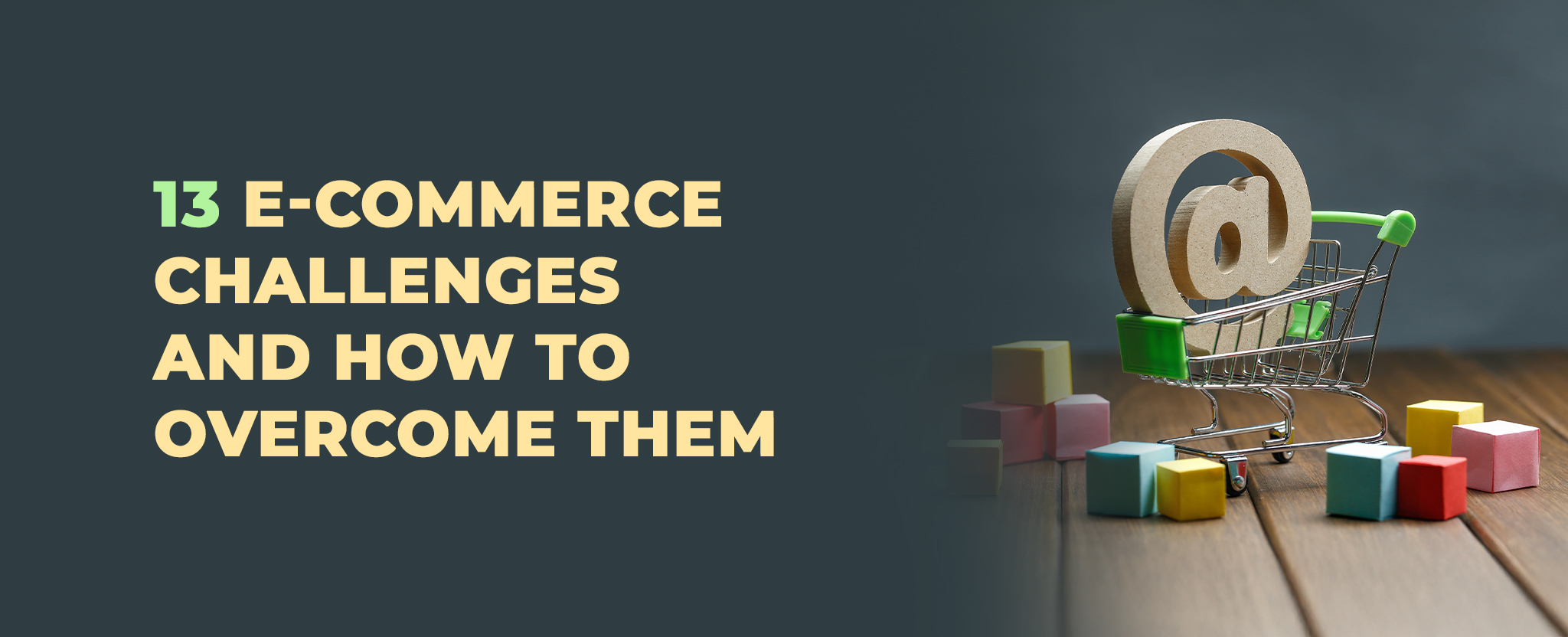
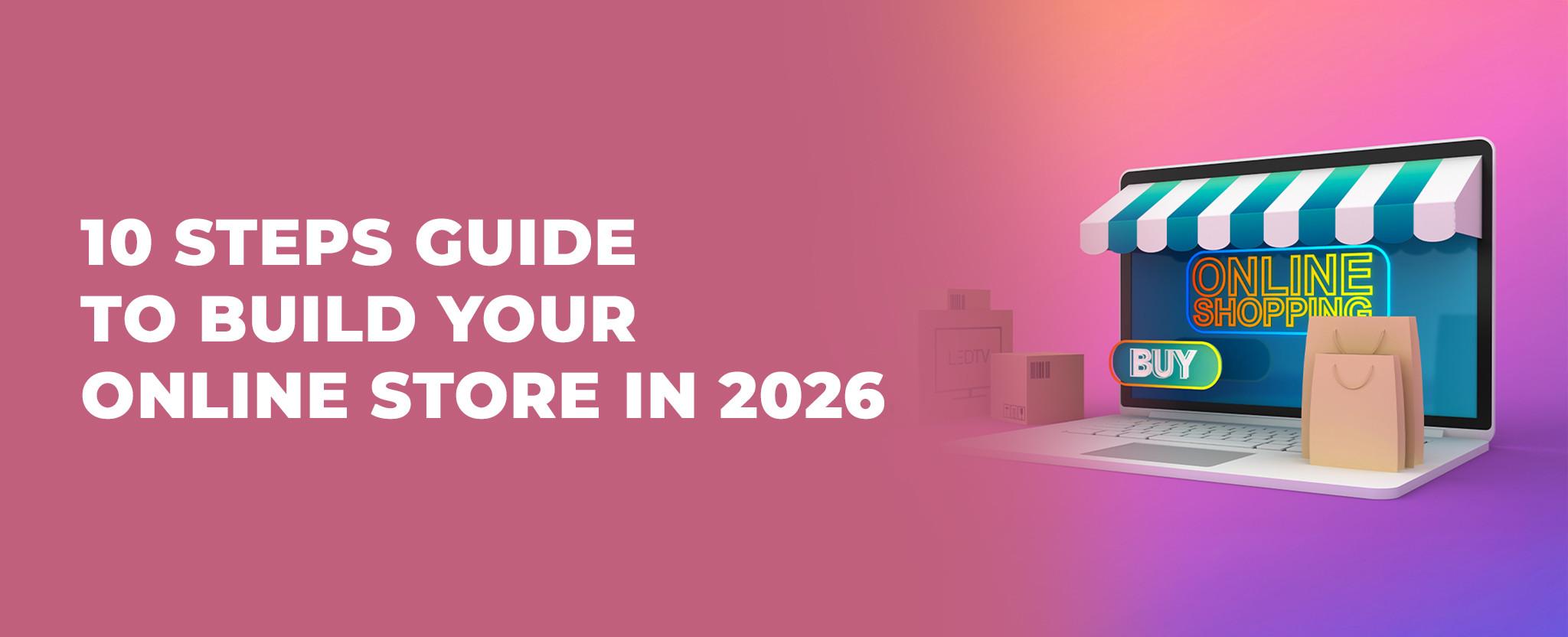

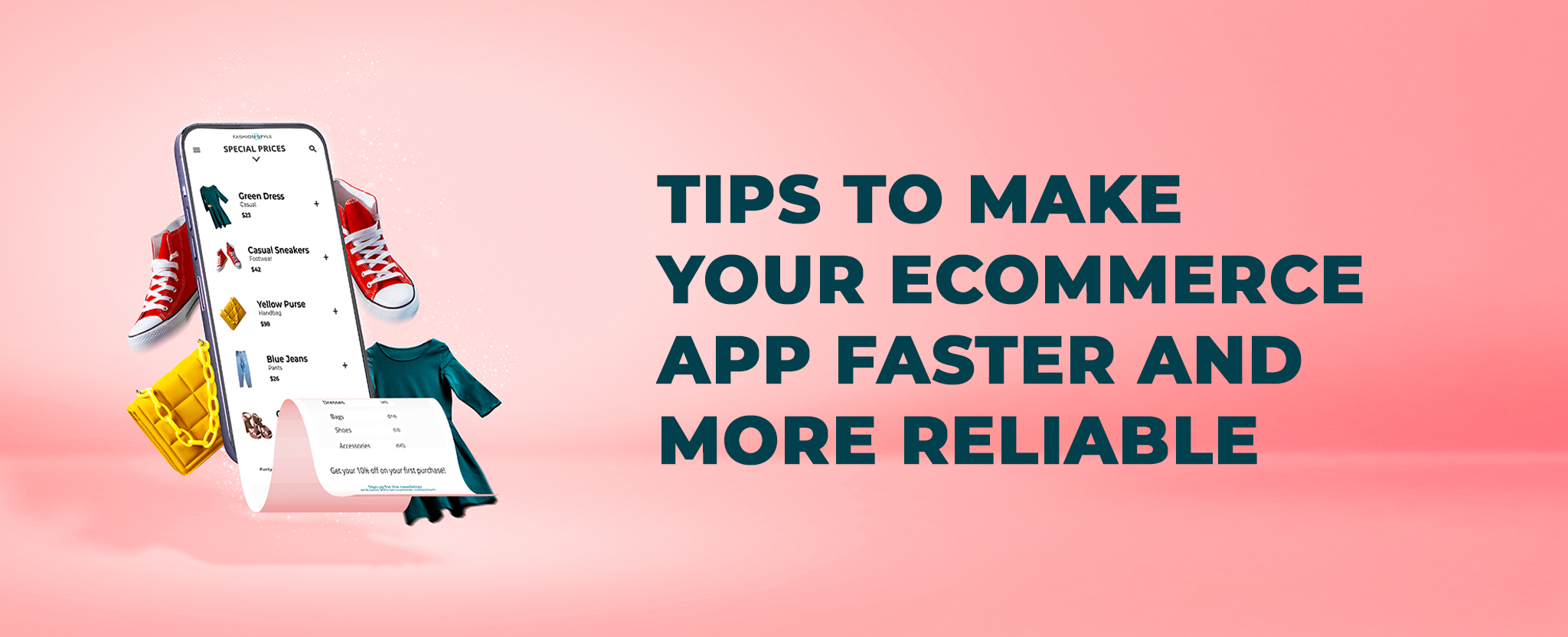






Comments